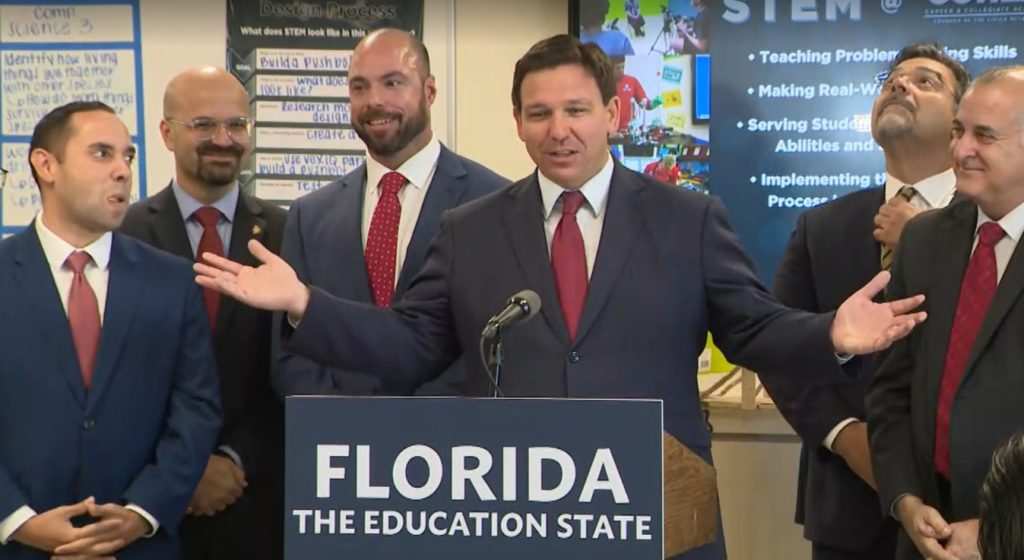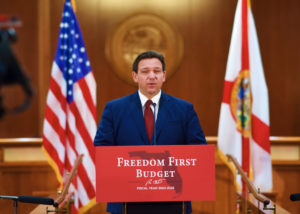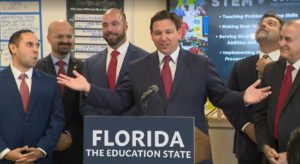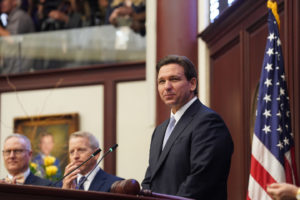Florida schools score best in innovation, helping disadvantaged students
Florida schools top the nation in several key measures, a testimony to two decades of reforms led chiefly by Republican governors, a new report says.
The Sunshine State’s schools earn an “A…

Florida schools top the nation in several key measures, a testimony to two decades of reforms led chiefly by Republican governors, a new report says.
The Sunshine State’s schools earn an “A for Achievement and Return on Investment,” the title of a report by the Conservative Education Reform Network, a project of think tank American Enterprise Institute.
“Florida ranks close to the top of the class on overall achievement and at the very top for return on investment,” says the report’s summary. Additionally, “it is the single best state in which to be a low-income public school student.”
The report credits three strategies enacted by state lawmakers for the success:
- Focusing on early education and ensuring all students can read by 3rd grade
- Developing assessment structures that monitor progress rather than imposing high stakes
- Building an increasingly robust school choice ecosystem
“Many states’ education focus areas fall victim to the pendulum swing brought about by party shifts, but Florida offers a real case study of education-engaged politicians building and sustaining a coherent legislative agenda,” the summary says.
Reforms started in the early 2000s under then-Gov. Jeb Bush and have continued under current Gov. Ron DeSantis, who made Florida the first state to implement progress-monitoring assessments statewide, reopened schools quickly during COVID-19 and expanded school choice to all students regardless of income in 2023.
The results are clear, as the state’s 4th graders ranked third in the nation in reading and fourth in math on the National Assessment of Educational Progress report card in 2022. That was up from 10th and 19th respectively in 2015, and ahead of states such as New York and California, which far outspend Florida in education per student.
Benefitting low income students
Florida virtually eliminated learning loss during COVID, something only four other states could boast, and shows significant progress among low-income learners.
In both 2019 and 2022, “Florida’s fourth-grade students who qualified for free and reduced-price lunch outperformed comparable students of economic disadvantage in all other states,” the summary says. And those students saw the second-smallest drop in scores from the pandemic. (All states but South Carolina showed a decrease, but Florida’s was smallest).
This all points to Florida as an educational leader with ideas that could bear fruit nationwide.
State spending per pupil is about $11,200 when adjusted for price parity, and compares to $21,000 or more in three of the other top five states for 4th grade reading. The amount of money spent is less important than how it’s spent, the summary says, referencing prominent education economics researcher Eric Hanushek.
“In the case of states like Colorado, Florida and Utah, there is clear opportunity to ask what financial investments may be most impactful or foundational for student outcomes,” the summary says.
There’s still more to draw inspiration from and explore about the Sunshine State’s education reforms.
“The emerging pattern of Florida’s economically disadvantaged performance is worthy of additional study, as it reflects success in the difficult and important work of closing the achievement gap,” the summary states. “In a moment when education reform has come up against new and significant hurdles, Florida’s results are promising. We should be talking about them.”



